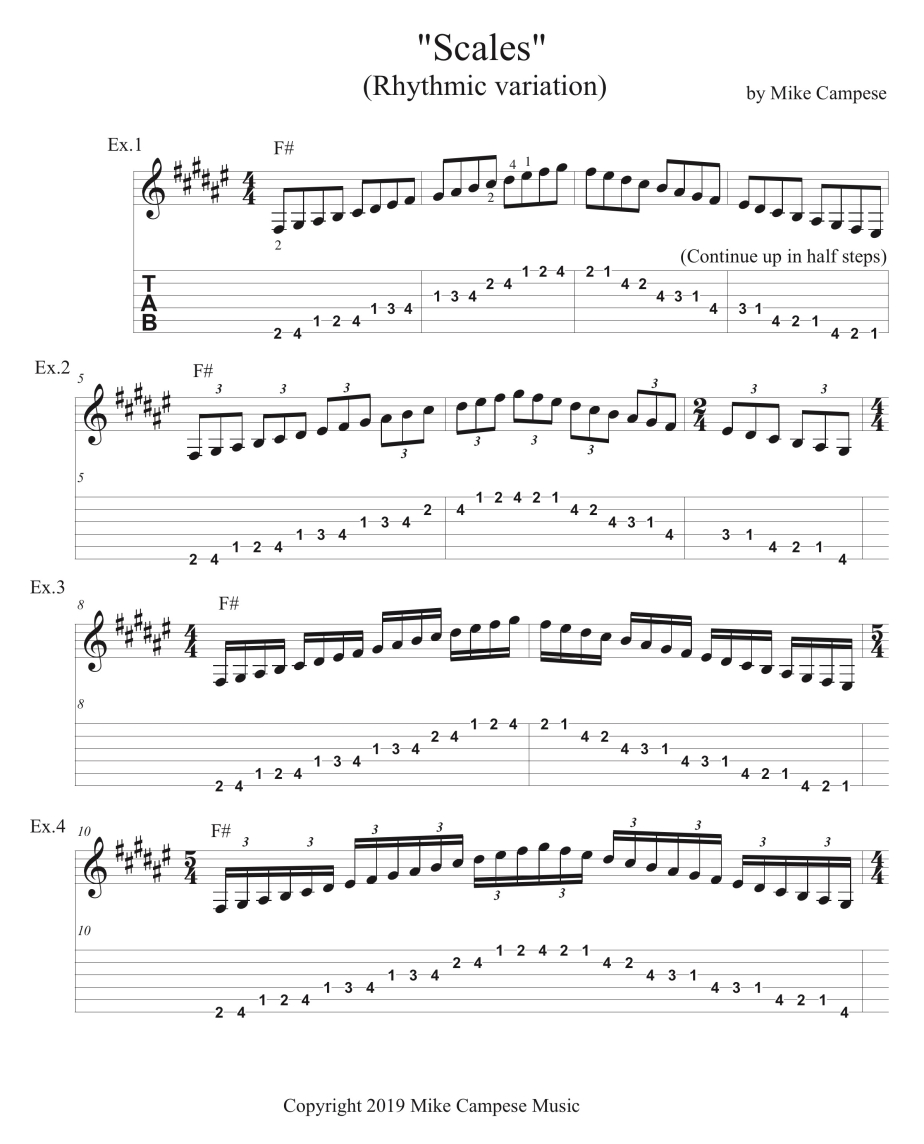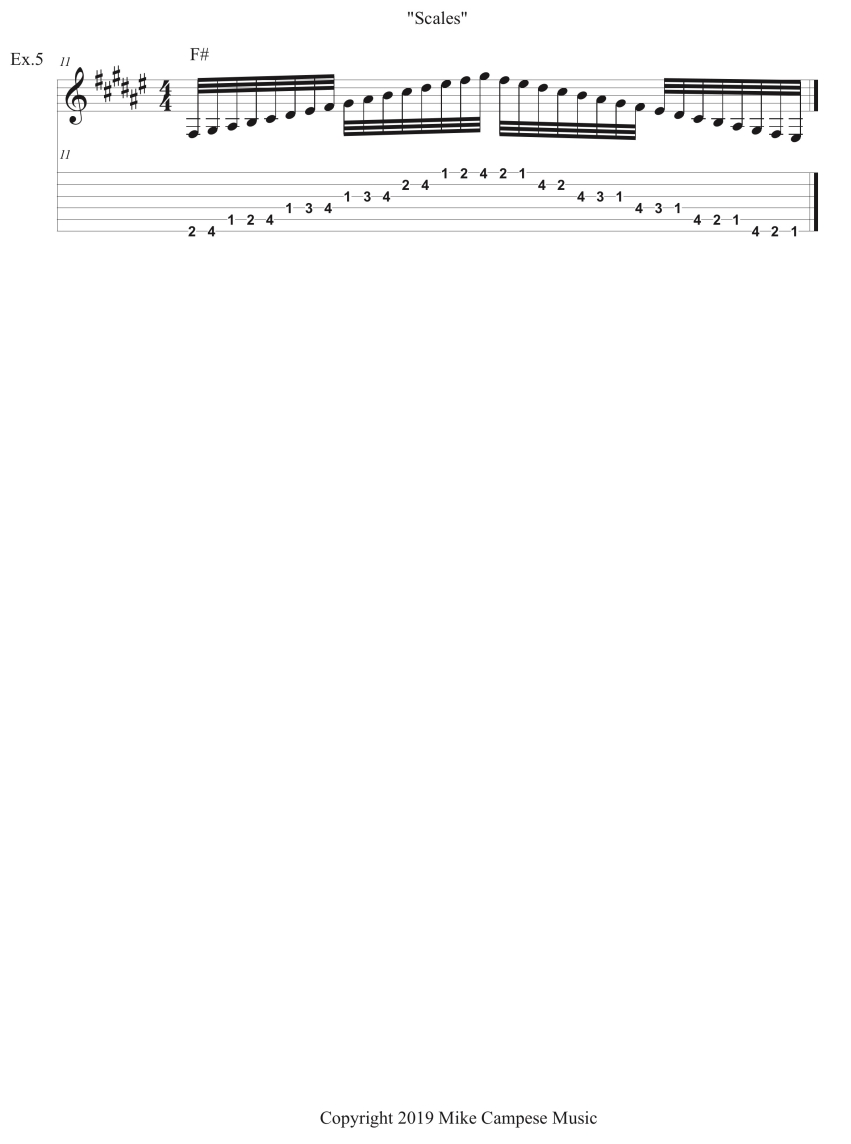Happy New Year! I hope you have a great year and all your wishes come true! I’m writing this from the friendly skies, which has been a great place for inspiration.
In this lesson, I will be showing you some ways to practice your scales and to help build your chops at the same time. It is important to practice scales with different rhythmic variations, such as eighth notes, triplets, sixteenth notes, sixteenth notes triplets and thirty second notes. This will make it more interesting than just practicing the same rhythm all the time.
For this lesson, I’m just using one position of the major scale, in F# Major (F#, G#, A#, B, C#, D#, E#). Of course, apply this concept to every possible scale.
Example 1 is an F# Major scale in the first position, played with just eighth notes. It is very important to play this with a metronome, very precisely. Also, move the pattern up in half steps, up to the 12th fret or higher and you can descend as well.
MP3 - Practicing Scales With Rhythmic Variation - Example 1
With Example 2, we are going to play the same scale with eighth note triplets, 3 notes per beat. The first couple of bars are in 4/4 and then it switches to 2/4. This makes the pattern rhythmically even when you play the full scale. Also, it will resolve on the one of the next key when you move it up a half step. You can play it in one position or move it up the neck. I realized that by moving patterns up in half steps, it helps you to more easily memorize the scale.
MP3 - Practicing Scales With Rhythmic Variation - Example 2
Next up in Example 3 is 16th notes using the same scale, 4 notes per beat. Be sure you accent the downbeats, it will be more effective. Do this with all the rhythms.
MP3 - Practicing Scales With Rhythmic Variation - Example 3
Example 4 is the F# Major scale using 16th note triplets, 6 notes per beat. It is getting faster and faster as we go. You can lower the metronome so you can play it more cleanly. Move up to high speeds for sure after you get it down.
MP3 - Practicing Scales With Rhythmic Variation - Example 4
With Example 5, we are definitely in the shred territory, with 32 notes, 8 notes per beat. Continue the same concept as in the previous examples.
MP3 - Practicing Scales With Rhythmic Variation - Example 5


That is it for now! Be sure to make up your own rhythms with your scales. Be sure to pick up my new album, “The Fire Within” and visit www.mikecampese.com for more information, to purchase CDs and merchandise.
Mike Campese is an all-around music performer, session artist and teacher competent in many musical styles, electric and acoustic. He has studied at G.I.T. (Honors Graduate), and with Paul Gilbert, Norman Brown, Stanley Jordan, Scott Henderson and Keith Wyatt.